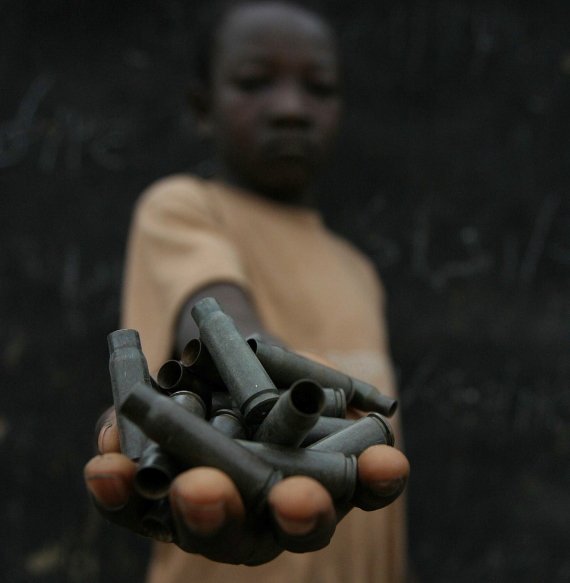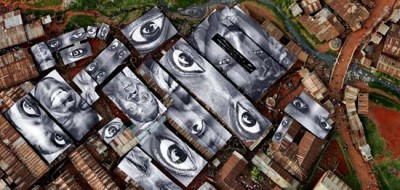The reintegration of child soldiers is one of the major challenges confronting most postconflict societies in the world. Apart from the possible rejection of these children by the communities that suffered atrocities committed during war, their reintegration may be hampered by their personalities, traumas, and overall maladjustment. These children went through great difficulties at a very young age, and therefore they need extra attention in order for a successful reintegration process.
Who is a child soldier?
Child soldier, according to the Cape Town Annotated Principles, means any person under 18 years of age who is part of any kind of regular or irregular armed force or armed group in any capacity, including but not limited to cooks, porters, messengers, and those accompanying such groups, other than purely as family members. It includes girls recruited for sexual purposes and forced marriage. It does not, therefore, only refer to a child who is carrying or has carried arms.
With the aim of preventing continued use of children as soldiers, the Convention on the Rights of the Child in 1990 prohibited the recruitment of children under fifteen years of age as soldiers and legal obligations were placed on peacekeepers who encountered child soldiers. Nowadays recruitment of soldiers exists not only in most developing countries, based on conscription, intimidation and force, but also in the developed countries, including the United States where boys and girls under eighteen can be exposed to military training or in the United Kingdom in the form of volunteers into military service in a bid to overcome shortfalls in recruitment quotas.
Why do children get recruited?
In many impoverished African, Asian and Latin American conflicts, children are cheaper and more pliable soldiers than adults.
Adults are more expensive to support, more difficult to discipline and command, and most importantly, are more likely to switch allegiance at critical moments. Children on the other hand are more pliable in terms of indoctrination and can more easily become emotionally attached to adult leaders and soldiers who act as authority figures.
![Child soldier [Author: Blueberry Morning, Flickr Account]](http://farm4.static.flickr.com/3160/2713361787_e43e854d08_m.jpg) Furthermore, sometimes children join armed forces at their own will, particularly in states with limited access to education, employment and political power where young people and children may become alienated from the state and the mainstream society. According to the experience in conflicts in Africa, many children, rather then being convinced of any political or military ideology, join a faction because of potential personal gain, including prospects for looting. Poor and semi-literate children from rural areas can easily be lured by warlords with simple promises of $5 and a pair of Levis jeans. Others join after the death of a family member as an opportunity to avenge their loss.
Furthermore, sometimes children join armed forces at their own will, particularly in states with limited access to education, employment and political power where young people and children may become alienated from the state and the mainstream society. According to the experience in conflicts in Africa, many children, rather then being convinced of any political or military ideology, join a faction because of potential personal gain, including prospects for looting. Poor and semi-literate children from rural areas can easily be lured by warlords with simple promises of $5 and a pair of Levis jeans. Others join after the death of a family member as an opportunity to avenge their loss.
In Liberia, children were used by Charles Taylor’s National Patriotic Front of Liberia movement. One of the reasons for this is that children don’t fully understand the danger they face in the battle. They were actually highly prized for being fearless in combat and often even used as officers to make them feel like they had power. Girls who were taken as child soldiers and were primarily used to carry weapons had extra burdens to bear – being raped by other soldiers. Between 6,000 and 15,000 were estimated to have taken up arms from 1989 and 1997 in Liberia.
The reintegration process in Liberia
The main objective of the reintegration is to reduce the fighter’s ability and desire to become political spoilers, engage in criminal violence, or derail the peace and recovery process by providing access to non-military forms of work and compensation. Reintegration also aims at preparing them and their families for civilian life and promoting reconciliation between the soldiers and the civilian population.
![Child soldiers [Author: cyclopsr, Flickr Account]](http://farm3.static.flickr.com/2104/2372890591_a3529d1cbb_m.jpg) The reunification of child soldiers with their families and communities has held a dominant position in reintegration approaches. Social reintegration support also covers intervention measures that promote the restoration of social capital, individual social adaptation, psychosocial counseling, traditional means of reconciliation, as well as programs for former child soldiers and other affected groups.
The reunification of child soldiers with their families and communities has held a dominant position in reintegration approaches. Social reintegration support also covers intervention measures that promote the restoration of social capital, individual social adaptation, psychosocial counseling, traditional means of reconciliation, as well as programs for former child soldiers and other affected groups.
The reintegration process in Liberia has attracted the participation of a range of stakeholders. Local and international nongovernmental organizations (NGOs), community-based organizations, faith-based organizations, government ministries, and the private sector have come together under the umbrella of the National Commission for Disarmament, Demobilization, Rehabilitation and Reintegration (NCDDRR) in an attempt to achieve success in this area. A very important role in the process was given to the local NGOs for their knowledge and awareness of the socioeconomic and political landscape of Liberia.
The significant role of NGOs in Liberia’s reintegration process more or less supports the now popular view that the civil society organizations are more responsive to people’s needs than are government agencies. The organizations whose participation has been vital to the reintegration of Child soldiers include the International Rescue Committee (IRC), Don Bosco Homes, the Children Assistance Programme (CAP), and Zorzor District for Women Care. These groups have depended on international donor agencies for financial support, and some have also raised funds from individuals and foundations.
The Don Bosco Homes organization, for example, focuses its activities on providing rehabilitative community and in-center skills-acquisition training, counseling, recreation, family tracking and reunification, academic tuition and fees, HIV/AIDS awareness, family mediation, child rights and protection services, and legal assistance. It also operates the Accelerated Literacy Programme and other fast-track learning programs to try and teach those who have missed years of school or have never attended.
NGO workers agree that the most challenging aspect of the reintegration process is integrating the children into families and communities. According to their estimates, about 75% of the children were returned home to their parents, but many of them remain on the street; a 2006 survey showed that between 5,000 and 6,000 children roamed the streets of Liberia’s capital, Monrovia, every day.
This is a nonprofit explanation.









Pingback: El mundo visto a través de los juguetes de los niños | United Explanations